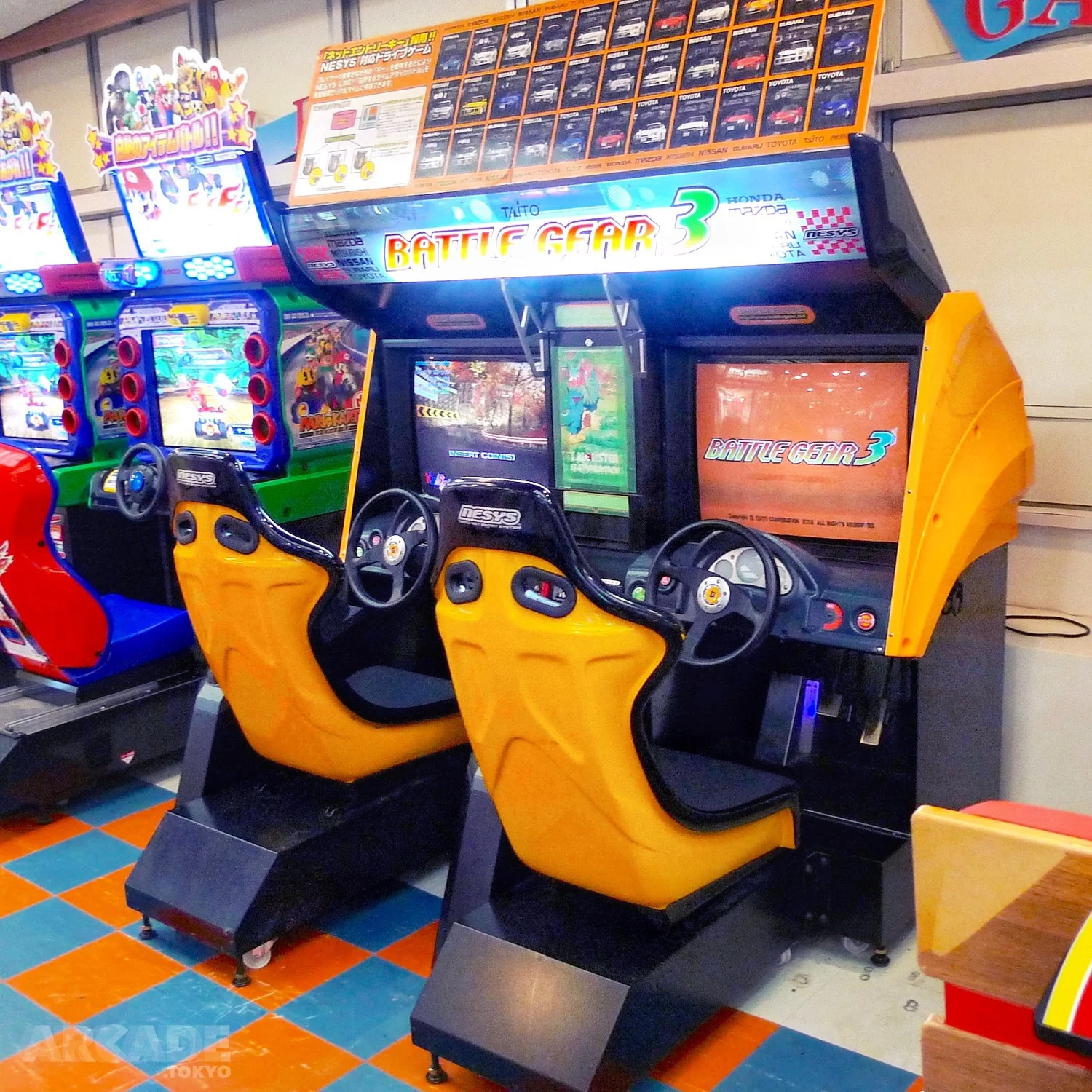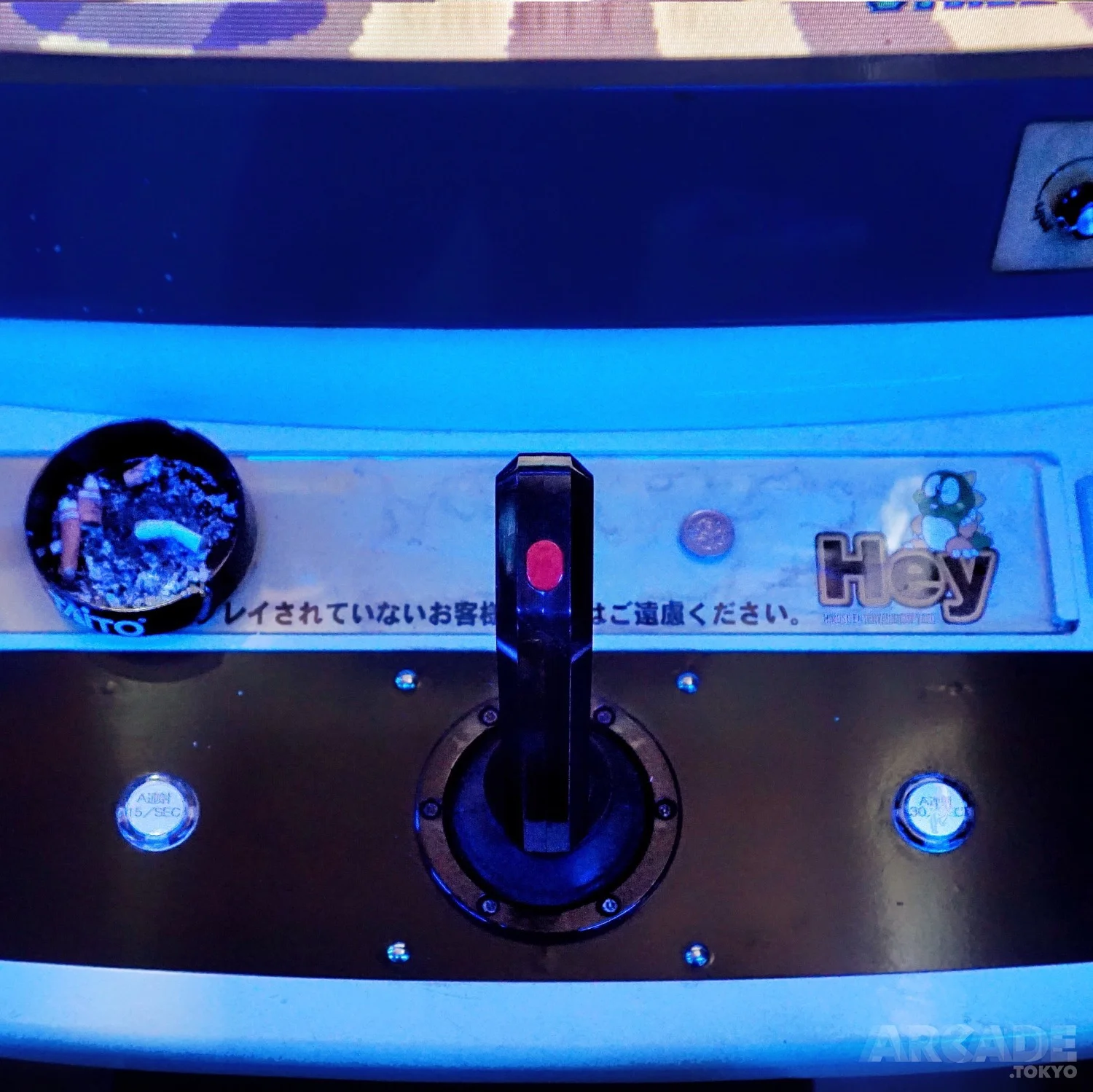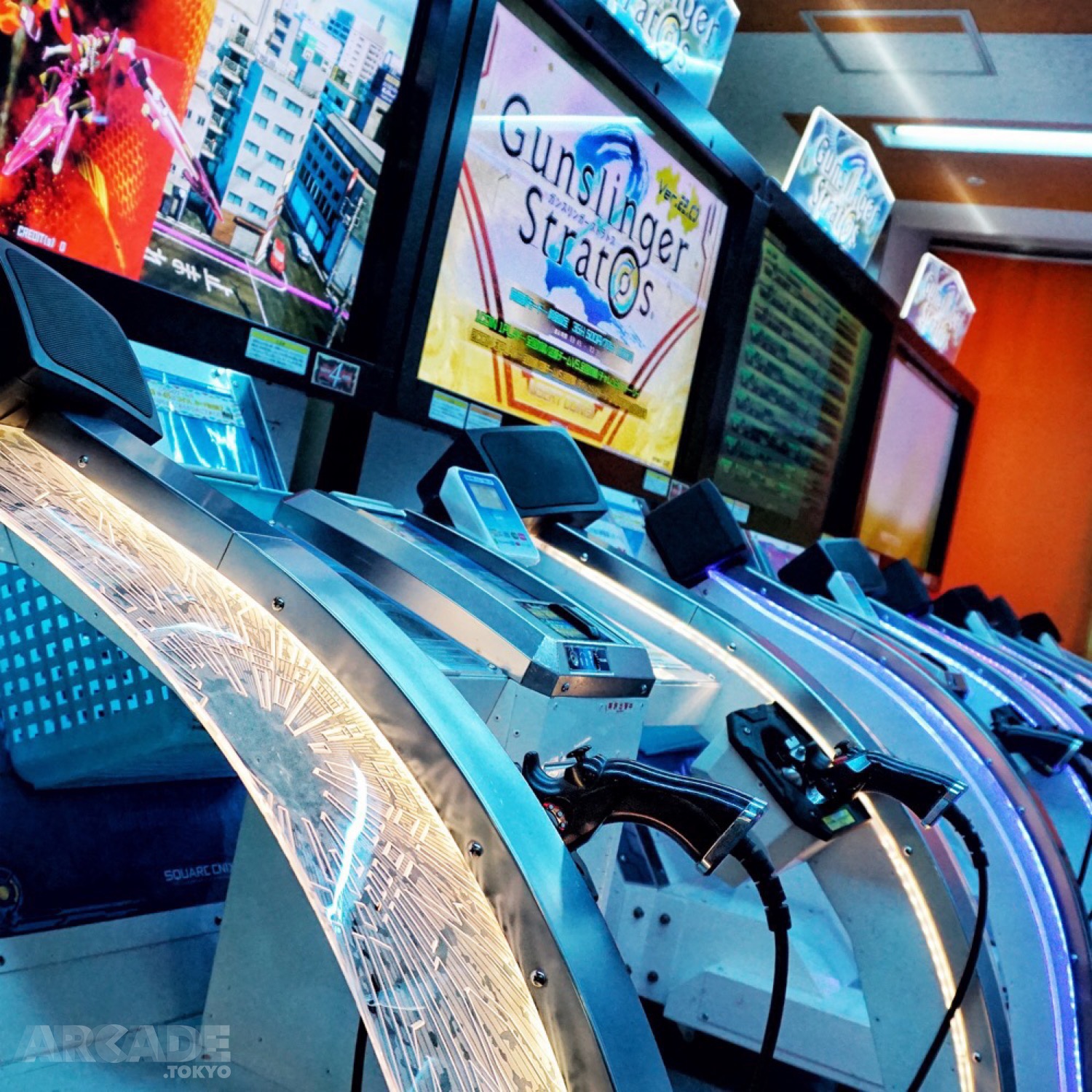Fast Car Go Down Hill

Arcade racing cabinets seem pretty universal: very accessible, easy to export around the world. But here’s a series that’s very particular in its appeal, and hasn’t (properly) made it outside Japan.
The Battle Gear series began as Side by Side in 1996, and focuses on touge racing. “Touge” is Japanese for “mountain pass” and, apparently, racing down them is a thing. You get to pick from a bunch of real cars — all Japanese — which you can see listed on the cardboard stand above the cab.
So it’s a Japanese racing style with Japanese cars. On top of that, add real-life track locations which are also all in Japan. (Included is the picturesque hot spring resort of Hakone, which is where I took this picture.) All in all, it’s very Japanese.
But apart from the content, there’s one other thing about Battle Gear 3 that ties it to Japan. As far as I can tell, this is one of the very earliest games to make use of Taito’s NESYS networking system for arcade cabinets. BG3 was released in 2002, and the only earlier game I can find that used NESYS is some mahjong thing in 2001. No doubt someone on Instagram will correct my history here.
It was also one of the earlier games where players used smart cards to save their details and game stats to play online, get on leaderboards, share stuff, and so on. For Battle Gear 3 the card was actually a mock car key, inserted into the dashboard to play. Which is so cool.
Photographer and writer covering Tokyo arcade life – the videogames, the metropolis and the people






